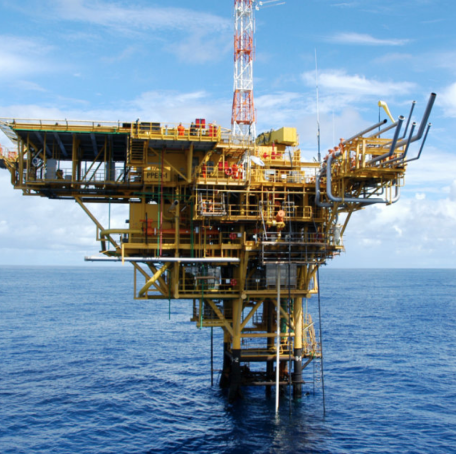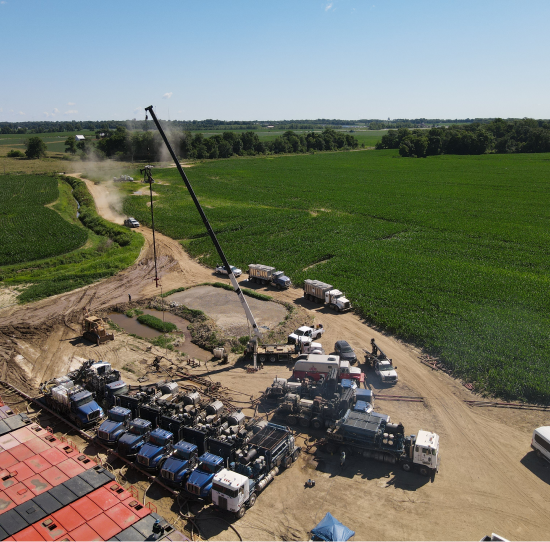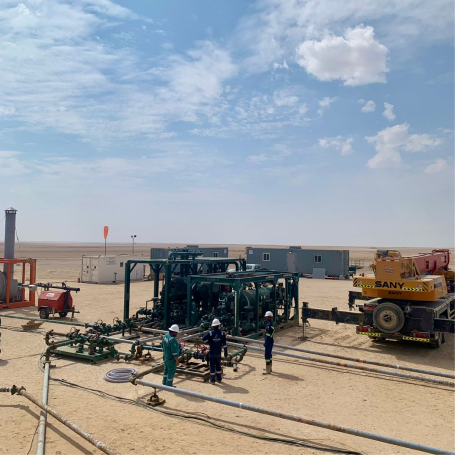Operations
Maha Energy is a leading Swedish listed player in the oil and gas industry. With a unique blend of industry experts and financial markets team, Maha has transformed into an innovative independent energy platform, strategically growing by acquiring opportunistic assets on a global basis, with the goal of building a diversified and balanced portfolio in the energy, oil & gas and minerals sectors.
Brazil

Brava Energia
During 2024, Maha has first acquired about 12 million shares in Brava Energia (previously 3R Petroleum), and then rolled-up Maha’s 15% holdings in 3R Petroleum Offshore S.A. (the Peroá and Papa Terra clusters) into Brava Energia in exchange for about 10 million additional shares. The transaction was closed in end of July 2024, and Maha presently holds about 22 million shares in Brava Energia, corresponding to 4.76% of outstanding shares. For more information, see Brava Energia's website.
USA

Illinois Basin
Maha owns a 100% working interest in the light oil (35 deg. API) Illinois Basin (IB), which had a production from about 60 wells of 328 BOPD in 2024, with 1.35 million barrels of proven (1P) oil reserves and 2.63 million barrels of proven + probable (2P). This area features low costs, low risks and low recoveries to date, positioning it as a strategic and attractive asset with long-term development potential. Maha concluded the drilling program for three new production wells during 2024 that resulted in a production ramp-up.
Illinois Basin
Maha owns a 97% working interest in the Illinois Basin (IB), which had 401 BOEPD of production in 2022, and features 2.7 MMboe of net proven + probable (2P) reserves and a 2P net NPV10 of USD 20.7 million at year end 2022. IB offers over 40 potential drilling locations, minimal recoveries to date and low operating costs, positioning it as a strategic and attractive asset with long-term development potential.
Lak Ranch
Lak Ranch - The Lak Ranch oil field was acquired by Maha in 2013. Maha owns 99% of this heavy oil asset, which is currently shut-in, but estimated to have original oil in place (OOIP) (best case estimate) of 62 MMboe, with less than 150,000 barrels having been produced to date.
Oman

Block 70
Maha is the Operator of Block 70, with 65% working interest. The Block is located in the middle of the prolific oil producing Ghaba Salt Basin in the central part of Oman and includes the shallow undeveloped Mafraq heavy oil field. In the first quarter of 2023, we started the production test on Block 70 that include all eight new production wells drilled in the 2022/2023 drilling program.
Maha Energy announced in December 2023 that the Company exits Block 70 in Oman.
Reserves and Resources
Reserves are estimated remaining quantities of oil and natural gas and related substances anticipated to be recoverable from known accumulations, as of a given date, based on:
- analysis of drilling, geological, geophysical, and engineering data,
- the use of established technology, and
- specified economic conditions, which are generally accepted as being reasonable, and shall be disclosed
Reserves are classified according to the degree of certainty associated with the estimates.
Proved reserves (P90) are those reserves that can be estimated with a high degree of certainty to be recoverable. It is likely that the actual remaining quantities recovered will exceed the estimated proved reserves (1P).
Probable reserves (P50) are those additional reserves that are less certain to be recovered than proved reserves. It is equally likely that the actual remaining quantities recovered will be greater or less than the sum of the estimated proved + probable reserves (2P).
Possible reserves (P10) are those additional reserves that are less certain to be recovered than probable reserves. It is unlikely that the actual remaining quantities recovered will exceed the sum of the estimated proved + probable + possible reserves (3P).
Reserves and resources as per year end 2023:


1. Volumes are Gross Working Interest volumes and are expressed before royalties, Government allocations and taxes.
2. The reserves review and issuance of the reserve report for the Company was made by the independent petroleum engineering consultants McDaniel & Associates Consultants Ltd., Calgary, Canada. The evaluation was carried out in accordance with standards set out in the Canadian Oil and Gas Evaluation Handbook, the professional practice standard under their Permit to Practice with APEGA and under the guidelines of the European Securities and Markets Authority (ESMA). The report has been prepared and supervised by a “Qualified Reserves
Evaluator”.
3. In July 2024, Maha rolled-up its 15% holdings in 3R Petroleum Offshore (the Peroá and Papa Terra clusters) into Brava Energia in exchange for approximately 10 million shares.
The reserves review and issuance of the reserve report for 3R was made by the independent petroleum engineering consultants DeGolyer and MacNaughton. Estimates of reserves presented in this report have been prepared in accordance with the Petroleum Resources Management System (PRMS) approved in March 2007 and revised in June 2018 by the Society of Petroleum Engineers, the World Petroleum Council, the American Association of Petroleum Geologists, the Society of Petroleum Evaluation Engineers, the Society of Exploration Geophysicists, the Society of Petrophysicists and Well Log Analysts, and the European Association of Geoscientists & Engineers.
Contingent Resources are those quantities of petroleum estimated, as of a given date, to be potentially recoverable from known accumulations using established technology or technology under development (TUD), but which are not currently considered to be commercially recoverable due to one or more contingencies. There is uncertainty that it will be commercially viable to produce any portion of the resources.
Contingent Resources are further categorized in accordance with the level of certainty associated with the estimates and may be sub-classified based on project maturity and/or characterized by their economic status.
Contingencies may include economic, environmental, social and political factors, regulatory matters, a lack of markets or prolonged timetable for development. Contingent Resources have a Chance of Development that is less than certain.
Project Maturity Sub-Classes are: Development Pending, Development on Hold, Development Unclarified and Development Not Viable.
Production
Above production numbers are gross values, before royalty payments, and before government share. * Including discontinued operations. ** Proforma, including indirect participating interests in new Brazilian offshore assets. The transaction to acquire these assets was closed in May 2023.
